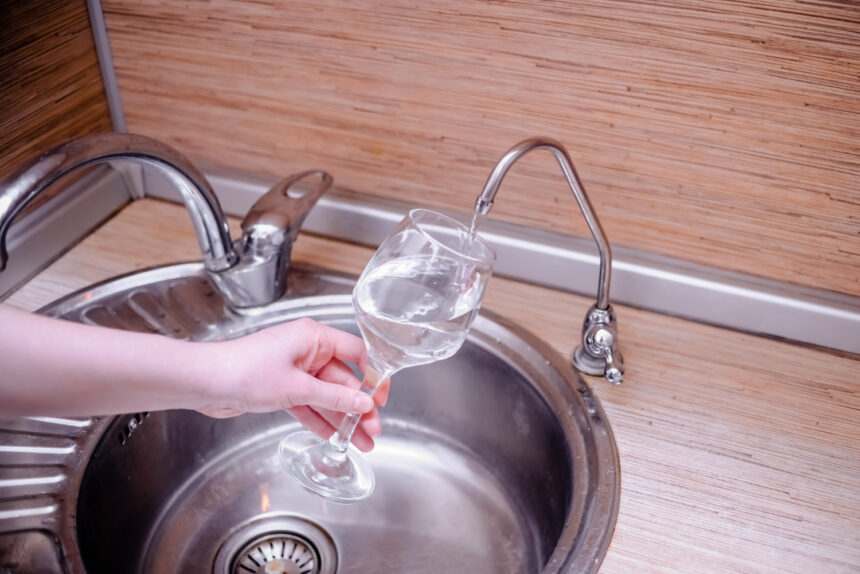A bar sink faucet is an essential fixture for any home bar or kitchen prep area. It combines style and functionality, making it easier to serve drinks or prepare food. Choosing the right bar sink faucet enhances both the look of the space and the overall experience when hosting guests.
When selecting a faucet, it’s important to consider various factors such as size, design, and functionality. Popular brands like Delta and Moen offer a range of options that fit different aesthetics and needs. Many faucets come with features like spray functions or touch activation, which can make tasks simpler and more efficient.
With countless styles and finishes available, there is a perfect bar sink faucet for every decor. Exploring these options can transform a simple area into an inviting space for entertainment and cooking. By taking the time to choose wisely, individuals can enjoy a more efficient and stylish kitchen experience.
Understanding Bar Sink Faucets
Bar sink faucets are designed for smaller sink areas, often found in home bars or kitchen prep stations. They differ from kitchen faucets in size, spout reach, and usability, making them a unique choice for specific tasks.
Types and Styles
Bar sink faucets come in various types and styles to suit different preferences and needs. Common types include single-handle, which allows for easy temperature control, and dual-handle, providing separate controls for hot and cold water.
Styles can range from modern to traditional. Modern faucets often have sleek lines and minimalist designs, while traditional faucets may feature ornate details and finishes. Some styles may include features like pull-down sprayers or swivel spouts, increasing functionality and convenience.
- Single-Handle: Easy to use with one hand.
- Dual-Handle: Offers separate temperature control.
- Pull-Down Sprayer: Adds versatility for various tasks.
Standard Measurements
When selecting a bar sink faucet, understanding standard measurements is key. Most bar faucets stand around 10 to 12 inches tall, with a spout reach of 6 to 8 inches.
It’s essential for the spout to extend over the center of the sink to avoid splashing.
Standard Measurements:
| Measurement | Typical Range |
|---|---|
| Height of Faucet | 10 – 12 inches |
| Spout Reach | 6 – 8 inches |
This ensures proper functionality and aesthetics, especially for smaller sinks, which may not accommodate larger faucets.
Material and Finish Options
Bar sink faucets are available in various materials and finishes, affecting both durability and appearance. Common materials include stainless steel, known for its resistance to corrosion, and brass, appreciated for its classic look.
Finish options include chrome, matte black, and brushed nickel, allowing homeowners to match the faucet to their kitchen decor.
Material and Finish Choices:
- Stainless Steel: Durable and easy to clean.
- Brass: Offers a vintage appeal.
- Chrome Finish: Provides a shiny, reflective look.
- Matte Black: Adds a modern touch.
Selecting the right material and finish can enhance the faucet’s longevity and aesthetic appeal.
Installation Guidelines
Installing a bar sink faucet requires understanding the necessary tools and following a clear process. Proper preparation and execution will lead to a successful installation.
Required Tools and Materials
Before starting, gather the following tools and materials:
- Tools:
- Adjustable wrench
- Screwdriver (flat and Phillips)
- Basin wrench (optional for tight spaces)
- Materials:
- Bar sink faucet
- Plumber’s putty or silicone sealant
- Water supply hoses
- Teflon tape for sealing threads
Each tool serves a purpose, from tightening fittings to aligning components. Plumber’s putty or sealant ensures a watertight fit. Water supply hoses connect to hot and cold water lines, while Teflon tape prevents leaks at threaded connections.
Step-by-Step Installation Process
- Preparation:
- Turn off the water supply to prevent leaks.
- Remove the old faucet if replacing one.
- Mounting the Faucet:
- Place the faucet into the sink hole.
- Ensure it is centered and properly aligned.
- Secure the Faucet:
- From underneath, slide the washer and bracket onto the faucet’s stud.
- Tighten the nut securely with an adjustable wrench.
- Connect the Water Supply:
- Attach the hot and cold water supply hoses.
- Use Teflon tape on threaded connections for a tight seal.
- Check for Leaks:
- Turn on the water supply and run the faucet.
- Inspect for leaks at all connections and tighten as necessary.
This methodical approach ensures that the faucet is installed correctly, minimizing the risk of leaks and ensuring functionality.
Maintenance and Care
Proper maintenance and care for bar sink faucets ensure they remain functional and visually appealing. Regular cleaning and addressing common issues will prolong the faucet’s lifespan and enhance its performance.
Routine Cleaning
Routine cleaning is essential for keeping a bar sink faucet looking great and working well. Use mild cleaners suited for the faucet’s finish to prevent damage. Avoid harsh chemicals that may corrode surfaces.
To clean, follow these steps:
- Gather Your Supplies: Use a soft sponge or cloth, mild dish soap, and warm water.
- Wipe Down the Faucet: Thoroughly clean all parts of the faucet, including handles and spouts.
- Rinse: Use clean water to rinse off any soap.
- Dry: Wipe the faucet dry with a soft cloth to prevent water spots.
For tougher stains or hard water buildup, a solution of equal parts vinegar and water can help. Apply it gently to avoid scratching.
Troubleshooting Common Issues
Bar sink faucets may experience issues that affect performance. Recognizing and fixing these problems is crucial.
1. Dripping Faucet: This may indicate a worn washer or cartridge. Replacing these parts usually resolves the issue.
2. Low Water Pressure: Check for clogs in the aerator. Unscrew it and clean out any debris.
3. Limited Movement: If the faucet feels stiff, it might need lubrication. Apply a silicone-based lubricant to the moving parts.
4. Discoloration: To remove stains, use a gentle acid cleaner like citric acid. Test on a small area first.
Addressing these common problems can keep a bar sink faucet functioning optimally. Regular check-ups and timely repairs can save time and money in the long run.




